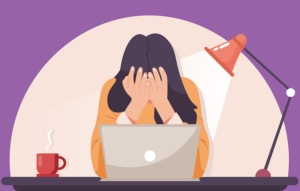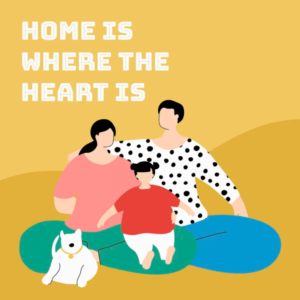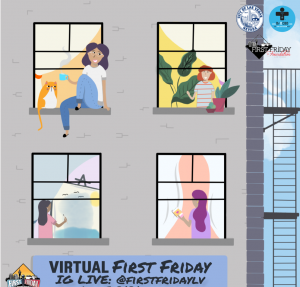
5 Challenges to Try for Your Wallet and the Environment
In today’s society, spending money and consumerism is everything – in nearly every aspect of our lives. This generally comes at a price to the environment and savings. However, there are small changes that can be made to take little steps into doing more beneficial work in helping the planet and your wallet. If you’re looking for ways to save your money and to save the environment, then check out these challenges you can try to help do both!
1. Buy clothes from thrift shops if you need to instead of new fashion.
Fast fashion is so damaging to the environment and can cause millennials to spend a tremendous amount just to keep up with the trends of the time. This culture of overconsumption of the next new thing is also damaging to the environment (1). Not only do fast fashion brands make their clothes so they don’t last, thus causing more consumption and more waste, but “More than 60 percent of fabric fibers are now synthetics, derived from fossil fuels, so if and when our clothing ends up in a landfill (about 85 percent of textile waste in the United States goes to landfills or is incinerated), it will not decay” (1).
If one wants to truly do something to help the planet, we can’t continue this idea that buying clothes from these brands is right. Of course, the ultimate goal is to stop buying from places like Forever 21, the Gap, Charlotte Russe, and H&M altogether. However, if you just need to take small steps to do it, I suggest, instead of going to some of the linked brand stores, try thrift shopping instead. Not only is it reusing great clothes, but thrift stores are almost always cheaper than brand stores. Cut these fast fashion brands completely, or try stopping for a month if you’re someone who likes to shop a lot. Shopping at thrift stores is a better alternative to try instead.
2. Try cash only.
Although extremely convenient, credit cards can cause overspending compared to having cash on hand. Forbes mentions that credit cards can mean spending 100% more than intended (2). In a study by Drazen Prelec and Duncan Simester of MIT, shoppers who were allowed to pay by credit card paid twice as much as those who had to pay with cash. This is because having a credit card means you feel like you have more money (when, technically, it’s not actually yours). Plus, credit cards make it effortless to go over a budget since its function is to be as convenient as possible to get you to spend money.
If you want to try to stop using plastic and budget more, this is a great alternative. Taking a predetermined amount of cash on you for the day and only using that to spend money will force you to be more conscious of where you’re putting your money. This can help with the environment because it can help you become more conscious as to where you’re spending your money since you only have a limited amount to work with. The whole point is to eventually put your money towards the business you want to support. However, if you’re a beginner and if that is a step too steep, then trying to go cash only for a day, and then expanding to a week, and so on, can really help with saving!
3. Try bringing lunch to work/ school.
Eating out is such a huge part of America’s culture, especially with many millennials. A CNBC article mentioned: “Roughly half of all millennials are prioritizing delicious meals today over saving for tomorrow. New data from LendEDU, which surveyed 1,000 Americans ages 22 to 37, found that 49 percent spend more on dining out than they put towards retirement” (3). Eating out is ingrained in our culture at this point, but doing it so much can really put a damper on savings.
By making dishes at home, we are the ones in control of the ingredients we choose, which can also cut down on packaging as well. Challenges like bringing lunches to work or school for a week (or a month if you’re that dedicated) are a great challenge to try to save some money and help the environment. Even making plans to bring lunch 3 times a week can make a big difference.
4. No water bottles.
The water bottle industry has become a million-dollar industry because of advertising saying that “bottled water is so much cleaner than tap” or advertising that shows a company’s water comes from the freshest of streams or the purest of glaciers. Spending so much on water bottles when there is a free alternative that doesn’t add to the plastic epidemic.
This is why going without buying/using water bottles is a great challenge to try. Plastic is so damaging to the environment, stopping the scam of water bottles can really help the environment and your savings if you’re someone who initially thought that bottled water was cleaner than tap, which studies show that tap and bottled water are comparable (however, please keep in mind this comes with a few caveats since there are of course many exceptions).
US News said, “Tasha Stoiber, senior scientist with the Environmental Working Group, says, “We don’t recommend using bottled water unless it’s in the case of an emergency or something has gone very wrong, like in the case of Flint, Michigan, where there’s no safe water for anyone to drink” (4). However, if you live somewhere where the tap water is safe to drink, challenging yourself to remove water bottles can make a big difference.
5. Lastly, try going without meat for a week or at least.
Only 2-3 times a week! If you’re someone like me, it can be extremely hard to get a meal without a protein that comes from an animal. Factory farms are a major contributor to greenhouse gas emissions, air pollution, and deforestation. Whether you’re a vegetarian, vegan, or love meat, it’s good to at least cut down on red meat for health reasons too.
The challenge for this one can be different depending on your willingness to cut out meat. This helps save money because a lot of times when going to the grocery store, depending on the kind, red meat is usually one of the most expensive items on the receipt. Substituting red meats with a different protein (like beans and legumes) at least 2-3 times a week can make a difference and can really challenge yourself into making healthier choices that save you money too.
For more information on the ideas discussed, please check out these sources:
- https://www.nytimes.com/2019/09/03/books/review/how-fast-fashion-is-destroying-the-planet.html
- https://www.forbes.com/sites/billhardekopf/2018/07/16/do-people-really-spend-more-with-credit-cards/#6b1050581c19
- https://www.cnbc.com/2018/08/20/how-much-millennials-spend-at-restaurants-each-month.html
- https://health.usnews.com/wellness/articles/bottled-water-vs-tap-water



